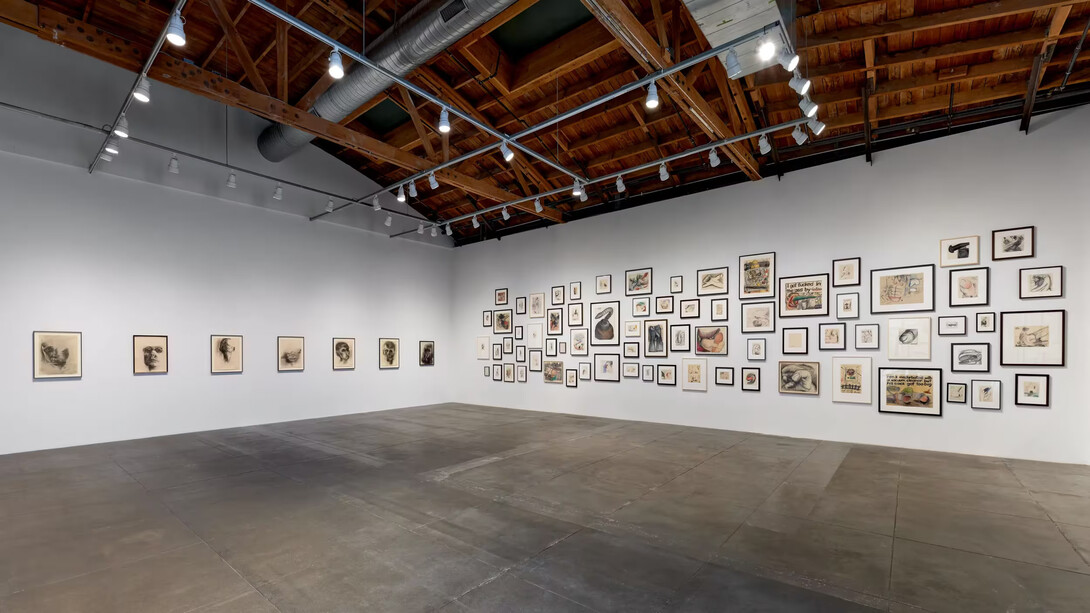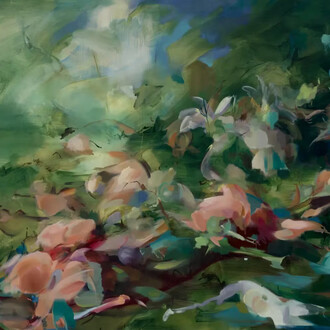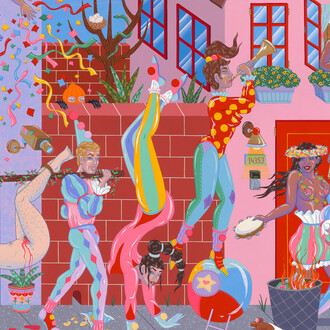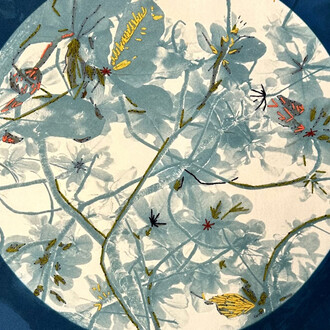As the first major exhibition in Los Angeles dedicated to Lee Lozano, Hard handshake brings together over one hundred drawings by the artist, spanning the years 1959 to 1968. Lozano made these provocative drawings at a remarkably fast pace, using a variety of artistic styles. Informed by the artist’s unsparing eye and wry humor, they dissect such societal norms as gender roles and property ownership while challenging the commodification of art and, ultimately, all conventional aspects of life. Shown together, Lozano’s drawings embody her unbridled energy and social consciousness, radical for their time, and continue to provoke questions today. Although rarely exhibited during her lifetime, this body of work is instrumental to understanding the singular trajectory of Lozano’s practice.
The selection on view begins with the artist’s 1959 fervent self-portraits and macabre anatomical studies of male torsos and grinning skulls. These early works, which coincided with her time as a student at the Art Institute of Chicago, exude an eeriness and irreverence that prefigure the work Lozano would make after arriving in New York at the end of 1960. Moving to a downtown Manhattan loft catalyzed a personal creative evolution that first materialized in a series of studio drawings, executed in rapid succession, centered around blunt, grotesque portrayals of the human body.
Fragmented body parts—distorted heads, wide-open grins, phallic noses, genitalia—appear within claustrophobic compositions featuring anthropomorphized objects such as drains, traffic lights and fuse boxes. Combining elements of expressionism, surrealism and pop, Lozano quickly developed a striking personal iconography in a deep exploration and ultimate subversion of conventional notions of power and progress.
Lozano’s works during this time frequently incorporated text as well—tongue-in-cheek slogans drawn from advertising and popular culture, forcefully rendered in black letters across images of body parts, religious symbols, pipes and other libidinally charged objects. In these works, text and image form a complex network of associations that mine social, sexual, and political mores. In the years 1962 to 1963, Lozano’s lexicon expanded to include anthropomorphic airplanes and tools. Airplanes, in particular, began whizzing around her compositions with heightened symbolic force, serving both as representations of masculine intrusions into feminine space and as metaphors for the raw, uninhibited energy essential to creative activity.
Around 1964, Lozano abandoned humorous textual interplay and ribald imagery in favor of unadorned depictions of tools. Various hardware associated with male power and productivity—screwdrivers, bolts, wrenches, clamps, hammers—became grounds for both formal and symbolic exploration. Emphasizing the sexual undertones these objects possess, Lozano’s tool drawings highlight the inherent violence of desire and the erotic tension endemic to a union of the mechanical and the organic.
By 1965, Lozano’s work had become more minimalist and geometric, increasingly focused on how to represent energy as form. Her notebooks from this period document a strong interest in various energy phenomena and the fields of quantum mechanics and cosmology. In preliminary sketches for a series of large-scale canvases, cones and cylinders delineated within a singular rectangular frame act as agents of speed, suggesting accelerated movement. Although sleeker and absent of the caricature-like quality of many of her earlier drawings, these works are charged with a similar undercurrent of motion and creative force. Lozano’s exploration of energy marked the final chapter of her artistic pursuits, culminating in her iconic ‘Wave Paintings,’ a powerful testament to her rare vision, intellect and intensity.
















